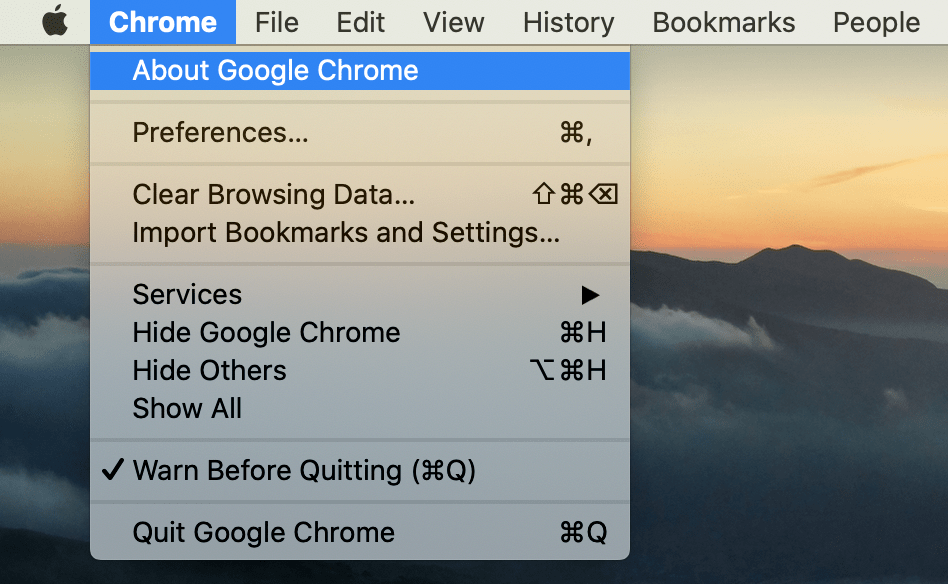Browser hijackers come in lots of different forms and affect browsers in various ways. The Chrome redirect virus is one example which, unusually, only affects Chrome browsers – though there are variants that affect other browsers too. Once on your Mac, it redirects your homepage and searches, displays intrusive adverts, and tries to direct you to more malware with fake alerts.

Make Chrome your default browser If you make Chrome your default browser, any links you click will open automatically in Chrome. Computer Android iPhone & iPad Set Chrome as your default web browser. Open the Google Chrome main menu again, press to “Settings” option. Scroll down to the bottom of the page and click on the “Advanced” link. Now scroll down until the Reset settings section is visible, as displayed on the screen below and press the “Reset settings to their original defaults” button. Download Default Browser for macOS 10.10 or later and enjoy it on your Mac. Default Browser allows you to automatically open links using the last browser you've used or any browser you specify. It provides an elegant menu bar utility to manage your web browsers and swap defaults with ease.
Everything you need to know about Chrome redirect virus
Change Browser To Google Chrome
Firstly, like other browser hijackers, Chrome redirect isn’t a virus at all. It doesn’t replicate itself or copy itself from computer to computer. And it won’t damage your Mac. However, it will frustrate you when you use Chrome, by displaying adverts and pop-ups, redirecting searches, and stealing data such as your IP address and search queries.
You may be wondering how Chrome redirect got onto your Mac in the first place. The answer, as with most malware, is by persuading you to click on a ‘software update’ or by bundling itself with another app that you chose to install. Apple’s built-in security is pretty good, but it can’t stop you if you choose to override it and install apps that contain malware. So malware developers persuade you to do just that, or just hide their code in another app.
To avoid downloading Chrome redirect, never click on an alert in a browser that tells you something on your Mac, like Flash Player, is out of date. And if you see a warning from macOS when you try to install an app, don’t just ignore it. Think carefully about whether you are sure the app you’re installing is safe and doesn’t contain any nasty surprises. macOS has a built-in security tool, called GateKeeper, that’s designed to protect you from apps that present a security risk. By overriding it and agreeing to install an app, you’re removing that protection.
How to remove the Chrome redirect virus on your Mac
The first step is to remove the application that you downloaded just before you noticed the Chrome redirect.
Go to your Applications folder, locate the app and drag it to the Trash. This won’t uninstall it completely, there may still be files on your Mac. Check these two locations by using the Go menu in the Finder and choosing Go to Folder... command.
/Library/LaunchAgents
~/Library/Application Support
Look for any files that contain the name of the application you just deleted and drag them to the Trash. You can use the search bar in the Finder window and search only in those folders, to make it easier.
Tip: There is a much easier way to get rid of the virus — use a dedicated antivirus, like the one in CleanMyMac X. It will remove all the files associated with the Chrome redirect virus. It also blocks hidden apps that feed on your Mac's memory. Install the free version of CleanMyMac X and click the Malware Removal tab.
This is what malware removal looks like in CleanMyMac X:
Next, you need to reset Chrome.
Mac Default Search Engine
- Launch Chrome and paste this in the address bar: “chrome://extensions”
- Look for any extensions you didn’t choose to install.
- When you find one, click it and choose Remove.
- Now paste this in the address bar: chrome://settings
- Go down the page until you see “On Startup” and change the homepage to the one you want.
- Scroll further down the page until you see the Search section. Reset the default search engine to your preferred search engine.
- Go down the page again until you see the Privacy and Security section.
- Click on Clear Browsing Data.
- From the menu, choose the length of time that covers the period since you noticed the Chrome redirect malware and make sure Cookies and other Site Data is checked.
- Press Clear Data.
- Quit Chrome and restart it so the changes take effect.

Once Chrome restarts, the redirect extension and the changes it made to your browser settings will be gone. You should be able to use Chrome as before, without any intrusive adverts.
Did you know?

Mac Default Browser Chrome
CleanMyMac X can clear private data like cookies and cache files, left on your computer by websites and malware like Chrome redirect. Just launch it, choose Privacy in the sidebar, press Quit all, then Scan. When it’s done, choose a browser from the list, select the data you want to get rid of and press Remove.
Mac Default Browser Chrome Google

Mac Default Browser Chrome Issues
The Chrome redirect virus isn’t a virus at all, but it is a nasty browser hijacker that takes control of Chrome and resets your homepage and default search engine settings. It then displays intrusive pop-ups and adverts as a way to persuade you to download even more malware. Thankfully, it’s not too difficult to get rid of, by following the steps above. And it’s even easier if you use CleanMyMac X for some parts of the process.
